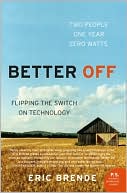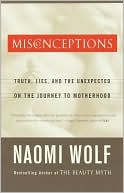Things in my life keep pointing to the Mennonites. I truly have no idea what that means – no conversion plans in the future – but Joe and I really like a lot of what they stand for. I checked out Living More with Less from the library after I saw it recommended on mothering.com. I had no idea that it was a Christian book. Joe grabbed it from the book basket and practically devoured it. I read it next, and we had so much fun discussing it.
One of the really striking things in this book is how oddly “ahead of the times” the Mennonites were when this book was written. It was published in 1980, and it is filled with “green” ideas that are just now becoming popular.
This book is split into two sections. The first section is more of the “why’s” of voluntary simplicity. The second section is filled with chapters that start with some words from the author on a particular subject (transportation, clothes, eating together, recreation…), and then there are pages of ideas from fellow Christians on how to live out simplicity.
One of the underlying principles that I really liked about the book was the focus on learning from those who live in countries that we consider to be developing… Countries that we think we need to swoop in and save. For all of our advances, and all of our technical knowledge, we are becoming more and more like the humans in Wall-E 😛 We are divorced from natural processes, and if we were forced to live without our conveniences, we certainly wouldn’t look like the advanced society that we like to think ourselves to be. This is how the author, Doris Janzen Longacre, discusses this topic.
If you as a North American travel to an economically poor country such as Haiti or Bangladesh, your first reaction is likely to be shock. You have heard of poverty, and seen it in pictures. But to find yourself face to face with hungry people jars your soul with feelings for which you are unprepared.
After a while, shock gives ways to ideas for development projects typically conducted by church agencies. These usually promote better education, nutrition, agriculture, sanitation, family planning, small business investments, and, increasingly, a concern that people receive just access to resources….
These reactions are certainly warranted. God help us when poverty no longer shakes us into action. But how rarely we realize that persons from other countries often go through a similar thought process when living with us!
It does seem that we want to swoop in and save everyone, but we could really benefit from making this a two-way street of assistance. They have as much to teach us as we do them, and it seems easy for Americans to overlook this fact. I say this as someone who did this EXACT same thing when I was overseas on a mission trip, and I wasn’t even in a poor country.
For we, of course, have problems too. No one wants to hear the whole sordid list again, but it begins with materialism, violence in streets and homes, family breakdown, drug and alcohol abuse, automobile accidents, poor diet and degenerative diseases, waste of material resources, pollution, and nuclear proliferation. What if we became as concerned with our own overdevelopment or maldevelopment as we are with the underdevelopment of poor nations? … Could they help?
Then she begins with quotes from foreigners who were shocked when they saw the blindspots of Americans. Here are just a few.
“America is a wasteful society. In every store you see disposable things. People want everything to go fast, so after using things once, they throw them away.” –Jusef Sumadi, Indonesia
“People in North America don’t care to repair things once they are out of order. There are few repair shops. I cannot imagine how many TVs and refrigerators are put into junk which are repairable.”–Guillermo Abanco, Philippines
“When we first walked into a North American church, my friend from Indonesia said, “The cost of this carpet alone would build a beautiful church in Indonesia.”–Sammy Sacapano, Philippines
“Children don’t like vegetables? No, I never heard of that in my country!”–Taiwanese nutrition student, Kansas State University
“American communities are beautiful. But instead of growing vegetables or fruits, the people prefer grass and spend money taking care of it.”–Guillermo Abanco, Philippines
So you get the idea. A lot of the ideas in the book come from missionaries who learned simpler ways of living when they were overseas. One, in particular, has happily been adopted in my home this week. This was the tip (actually, there were two on the same idea…)
Cordless Crockpots
“During our stay at the Thokoza Conference Center in Mbabane, I saw demonstrated what I’m calling an African crockpot. This is a fairly deep, simple grass basket stuffed full of crumpled newspaper. You make an impression at the top to hold the pot. In the morning, boil soaked dry beans for fifteen minutes. Then nestle the pot down in the newspaper inside the basket. Put a heavy blanket or pillow on top to keep in the heat. At suppertime the beans are soft, hot, and ready to eat.” –Darlene Keller, Mbabane, Swaziland
So it turns out that this is a pretty popular idea. I found some information here – http://solarcooking.wikia.com/wiki/Heat-retention_cooking – that I used to cook both rice and beans this week. They turned out delicious, and I only used a very small amount of electricity and gas to make them. It was so cool!
There were tons of other great ideas in there, but this post is getting rather long-winded, so I think I’ll wrap it up, lol. It really is a good book, though, and I recommend it if you can grab a copy. Joe particularly liked the ideas on transportation and ways to simplify around the house. I really liked the sections on eating together and homekeeping. We both liked a lot of the ideas for simple celebrations and recreation. We’ve already implemented quite a few, and its been wonderful. 🙂










